12 Ways To Keep Skunks Out Of Your Yard
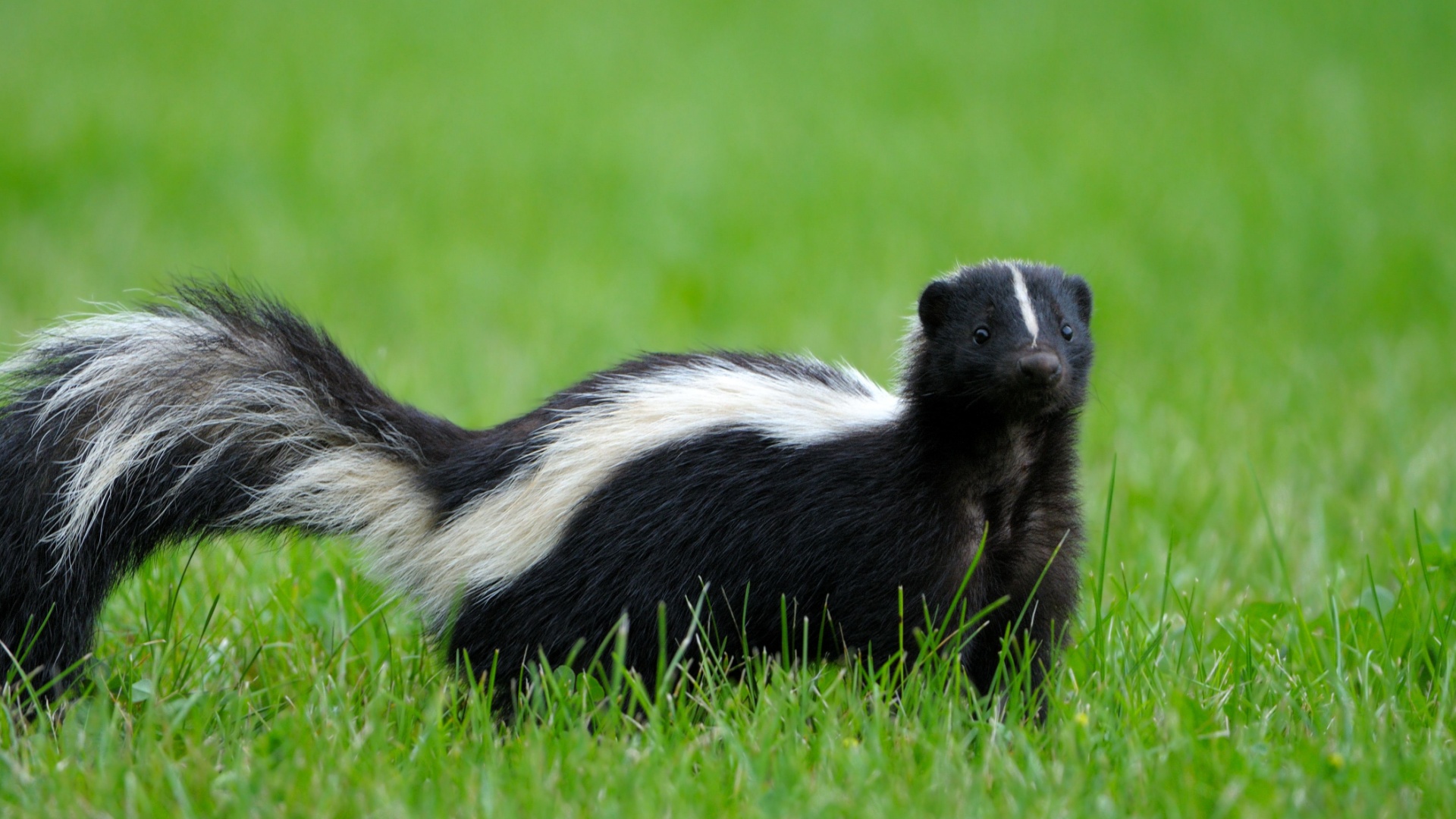
Nobody wants a surprise skunk encounter in their yard – especially not the lingering odor that comes with it! These little critters may be cute from a distance, but when they start digging up your lawn or nesting under your porch, it’s time to take action.
The good news? There are plenty of clever, humane ways to keep skunks away without turning your yard into a battleground.
Let’s explore the best tricks to make your outdoor space a skunk-free zone!
1. Secure Your Trash Bins
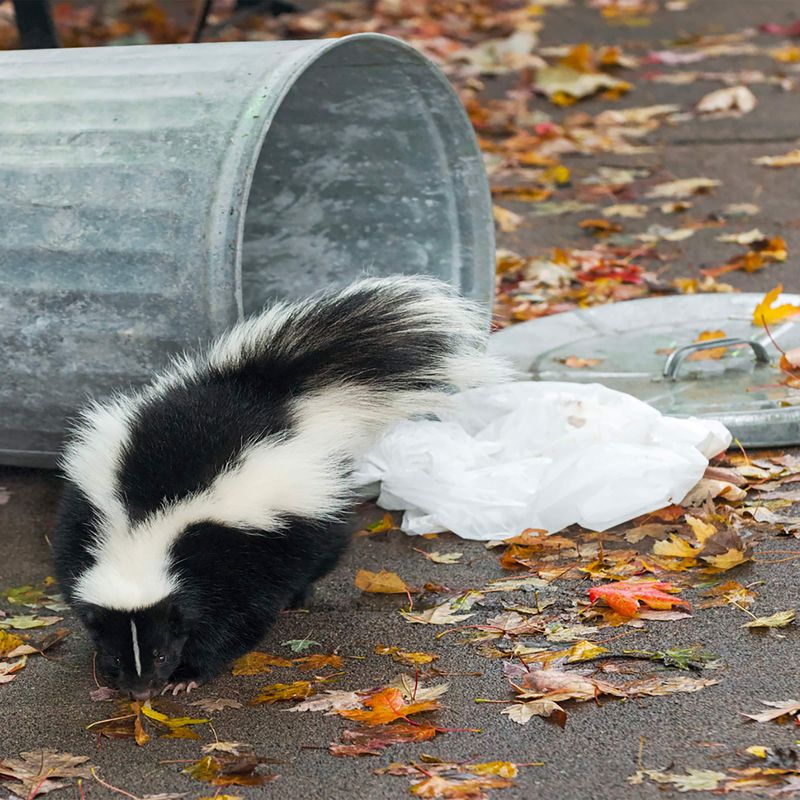
The secret to skunk-proofing your yard could very well start with your trash cans. Skunks are nocturnal scavengers, and your garbage might be their idea of a midnight buffet. Ensuring your bins have secure lids can be a simple yet effective deterrent. Consider investing in garbage cans that have locking mechanisms or animal-proof designs that make it difficult for curious paws to pry open.
Additionally, place your trash bins in an area that is hard for skunks to access. A well-lit space can discourage these shy critters, who prefer the cover of darkness. You might want to elevate the bins or use heavy-duty bungee cords to keep them sealed tight.
Regular trash collection is vital, but it’s equally important to clean any spills or leftovers that might attract a skunk’s sensitive nose. By keeping your trash contained and concealed, you’re making your yard far less appealing to these striped invaders.
2. Install Motion-Activated Lights
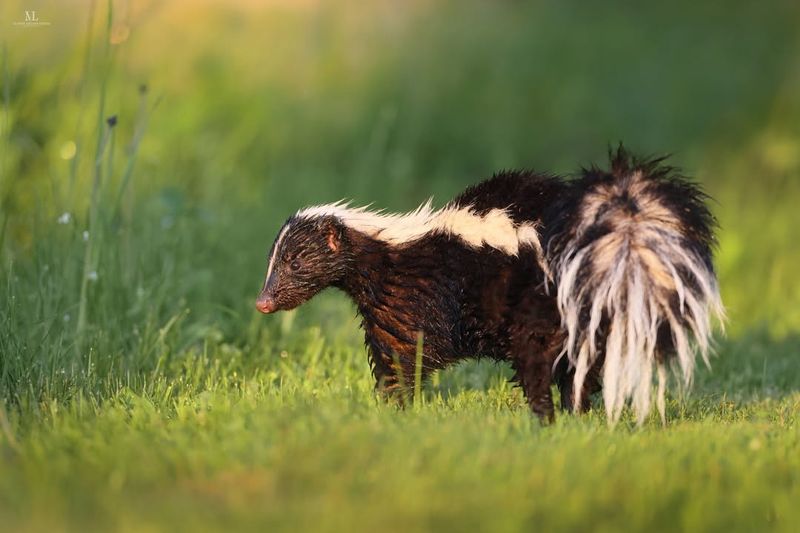
Skunks are naturally averse to sudden bursts of light. Installing motion-activated lights can disrupt their nocturnal habits and dissuade them from lingering in your yard. When a skunk triggers these lights, the sudden illumination may startle it, encouraging the animal to seek refuge elsewhere.
Position these lights strategically around entrances to your property, gardens, or any place you suspect a skunk might venture. The key is to ensure that the motion sensors are sensitive enough to detect small animals without being set off by every leaf that flutters.
For an added layer of deterrence, consider using lights with a solar-charged battery. These are not only environmentally friendly but can also save you on energy costs.
By combining illumination with sustainability, you’re crafting a skunk-free environment that’s both effective and eco-conscious.
3. Remove Food Sources
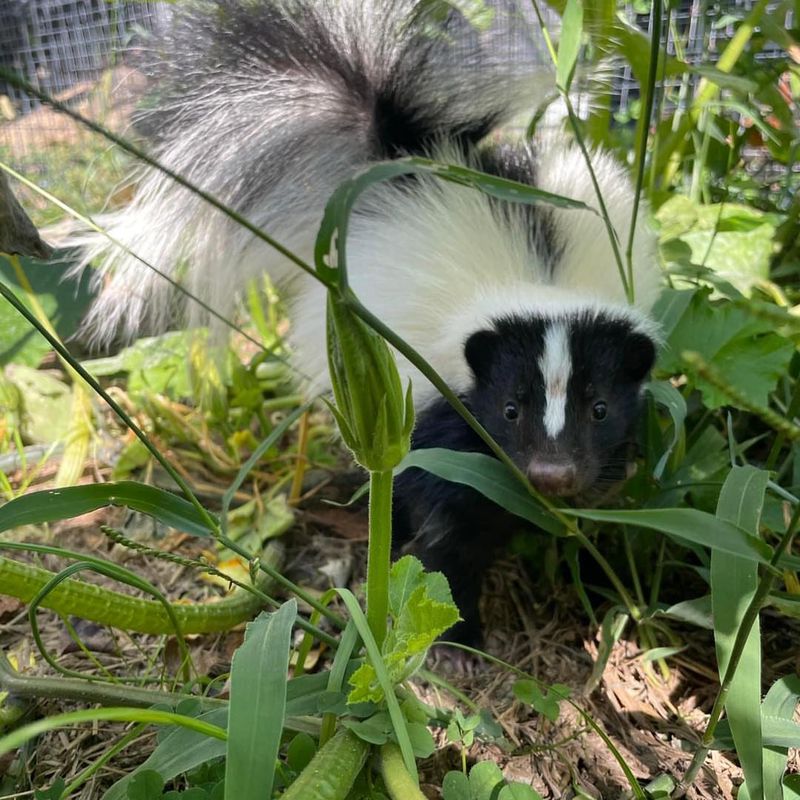
Eliminating potential food sources is crucial in keeping skunks away. These creatures have a keen sense of smell and are drawn to easy meals. Pet food left outside, birdseed scattered under feeders, and fallen fruits from trees can all serve as invitations to skunks.
Start by feeding pets indoors or removing any leftover food promptly. If bird watching is a hobby, opt for feeders with catch trays to prevent seeds from spilling onto the ground. Regularly inspect the area around fruit trees and collect fallen produce before dusk.
Composting can also be a concern. If you compost, ensure that it’s done securely, with lids or specific containers designed to keep the odor contained.
Monitoring your yard regularly will help you stay ahead in the skunk prevention game.
4. Use Natural Skunk Repellents
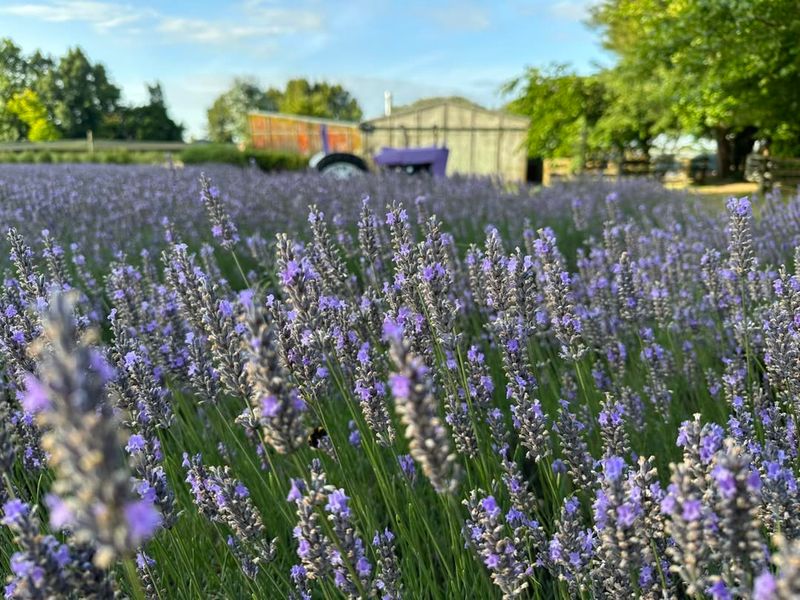
Nature provides its own solutions, and using natural repellents could be a harmonious way to deter skunks. Certain plants, such as lavender, marigold, and peppermint, are known to repel skunks due to their strong scents. Consider planting these around your garden or yard perimeter to create a fragrant, skunk-unfriendly barrier.
Essential oils derived from these plants can also be utilized. Spraying diluted peppermint oil around potential skunk entry points can act as a natural deterrent. Always test a small area first to ensure it doesn’t harm any plants.
While these methods are not foolproof, they can significantly reduce the risk of skunk visits when combined with other strategies. Plus, they add a pleasant aroma to your garden, enhancing its overall ambiance.
5. Close Off Hidey-Holes
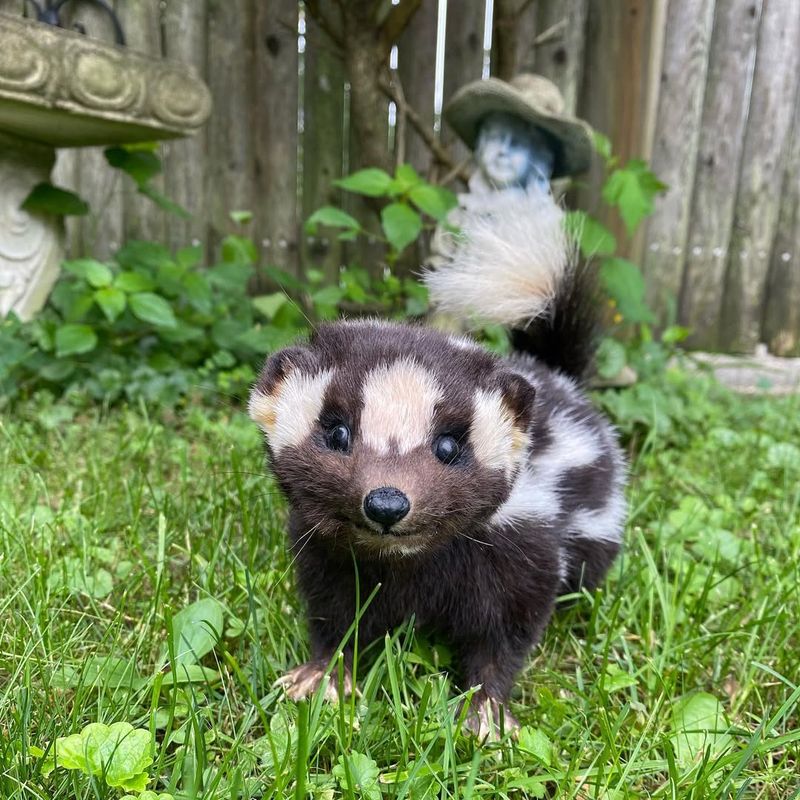
Skunks are notorious for seeking out cozy spots to make their homes. If your yard has inviting spaces like gaps under decks, sheds, or porches, you might be offering a potential residence. By closing off these hidey-holes, you prevent skunks from settling in and making themselves at home. Survey your property for any openings that might serve as an entry point.
Use materials like mesh wire or wooden planks to seal these areas, ensuring they are secure and inaccessible. Make sure to do this during the day when skunks are less active to avoid trapping any animals unintentionally.
A thorough inspection and timely action can save you from the surprise of discovering an entire skunk family has taken up residence in your yard.
6. Maintain Your Yard

A well-maintained yard is less attractive to skunks. These animals love to hide in overgrown bushes, piles of leaves, and debris. Keeping your lawn trimmed and tidy can eliminate these potential shelters. Regularly mow your lawn and trim back overgrown bushes.
Rake leaves frequently, especially in the fall when they tend to accumulate. Clear away any wood piles or garden debris that can look like a comfy nesting spot.
By maintaining a clean and orderly yard, you reduce the appeal for skunks to move in and make your outdoor space inviting for you and not for unwanted nocturnal guests.
7. Build A Skunk-Proof Fence
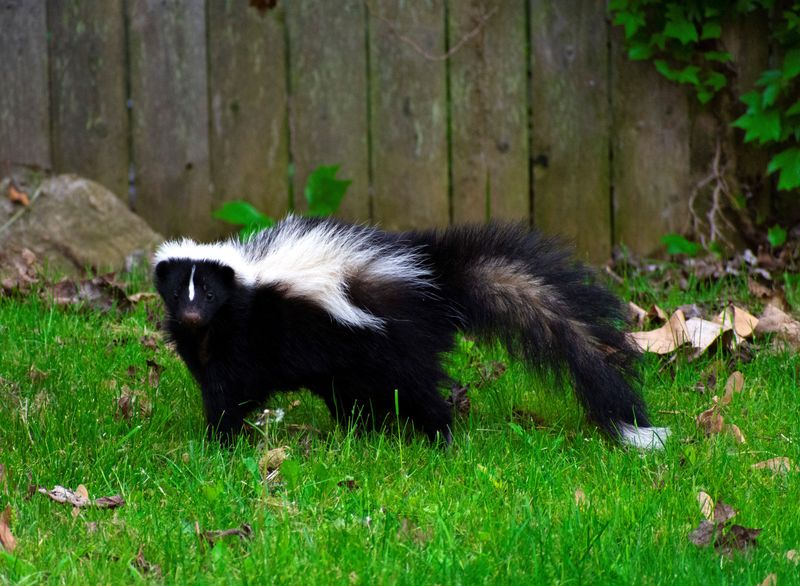
Fencing can be an effective method to keep skunks from entering your yard. However, building a skunk-proof fence requires some consideration beyond the standard picket style. Skunks are adept at burrowing, so it’s important to construct a fence that extends underground.
Aim to have your fence reach at least a foot below the ground to deter skunks from digging underneath. Materials like chicken wire can be effective for this subterranean barrier. Above ground, a height of about four feet should suffice, as skunks are not particularly skilled climbers.
While this might require more effort and resources, the peace of mind knowing your yard is fortified against skunks and other burrowing animals can be well worth the investment.
8. Apply Chemical Repellents
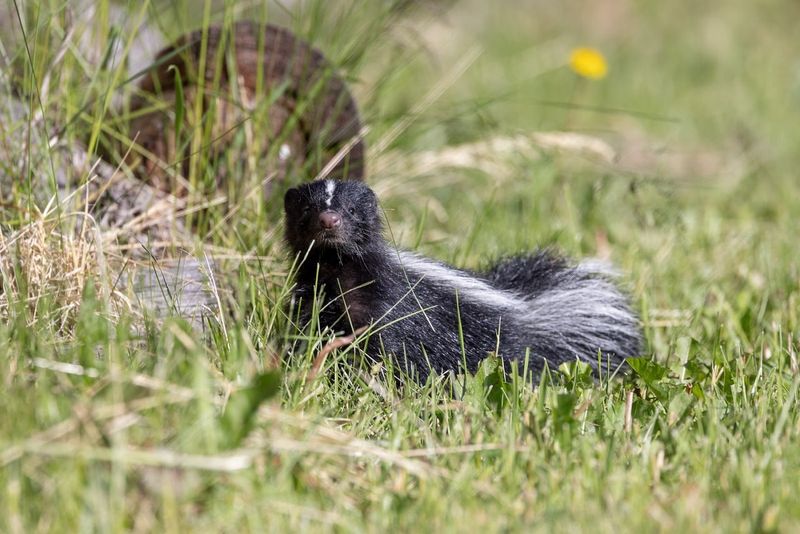
Sometimes, a bit of chemistry can help keep skunks at bay. Commercial skunk repellents can be an effective addition to your skunk-prevention strategy. These products often contain ingredients that skunks find unappealing, and when applied correctly, they can reinforce your yard’s defenses. Follow the instructions carefully when applying chemical repellents.
Overuse or incorrect application can harm plants or other wildlife, so it’s crucial to adhere to guidelines. Apply these repellents around the perimeter of your yard or specific areas you want to protect.
Remember, chemical repellents are most effective when used as part of a broader strategy, complementing other methods such as fencing or natural repellents. With the right combination, your yard can become a skunk-free zone.
9. Use Ultrasonic Devices
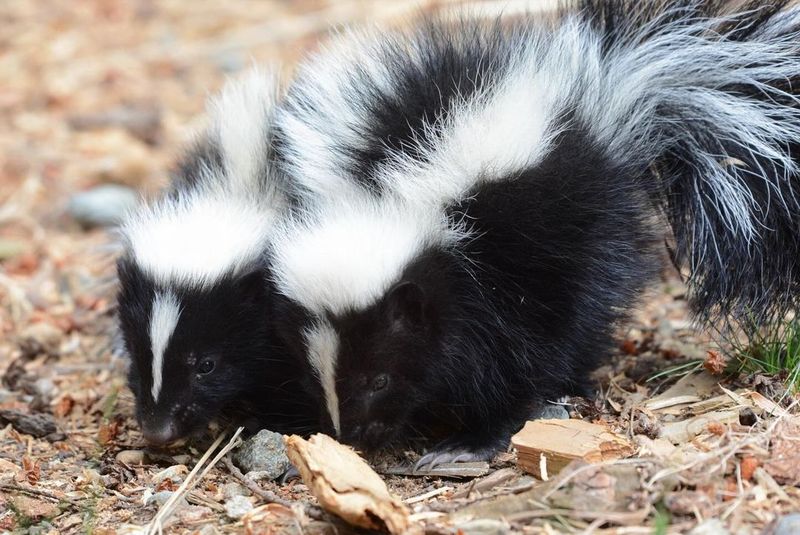
Technology lends a hand in the fight against skunks with ultrasonic devices. These gadgets emit high-frequency sounds that are unpleasant to skunks, deterring them from wandering into your yard. The beauty of ultrasonic devices is that the sound is typically inaudible to humans and most pets, making it a convenient option for homeowners.
Place these devices in areas where skunks have been spotted or near potential entry points. They are generally easy to install and can cover a significant range, providing a protective sound barrier.
While not a foolproof solution, when combined with other deterrent methods, ultrasonic devices can effectively reduce skunk visits and help keep your yard serene and odor-free.
10. Adopt A Dog
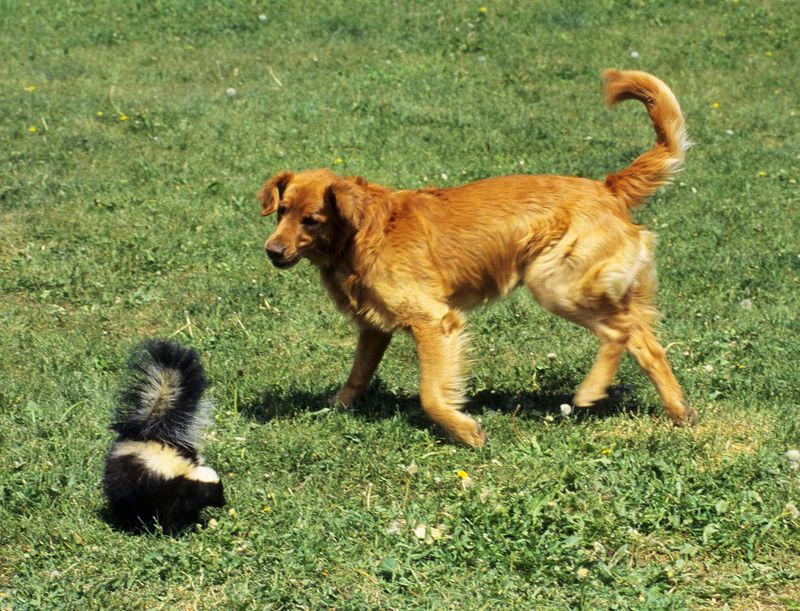
Man’s best friend can also be your yard’s best defender. Dogs, with their natural territorial instincts, can deter skunks simply by being present. The scent and sound of a dog can make skunks think twice before entering your property. If you already have a dog, letting it spend time in the yard can naturally discourage skunks.
For those considering pet ownership, adopting a dog could be a rewarding experience that comes with the added benefit of keeping unwanted skunks at bay. However, always ensure your dog’s safety first. Skunks can spray if they feel threatened, leading to a smelly encounter.
Supervising interactions and keeping your dog on a leash, if necessary, can minimize risks while maximizing skunk deterrence.
11. Call Wildlife Control
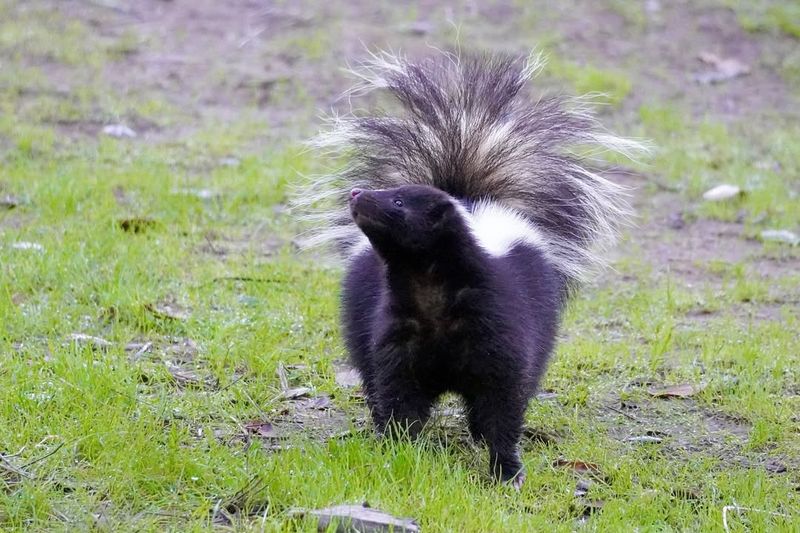
If skunks persist despite your best efforts, it might be time to call in the professionals. Wildlife control experts have the knowledge and tools to safely and humanely handle skunk problems. They can assess your situation and offer tailored solutions that fit your specific needs.
These professionals can capture and relocate skunks if necessary, ensuring the animals are handled in accordance with local wildlife regulations. They can also provide advice on further measures to prevent future skunk intrusions.
Calling in wildlife control doesn’t just solve the immediate problem but can also equip you with insights and strategies to maintain a skunk-free yard in the long term.
12. Educate Your Neighbors
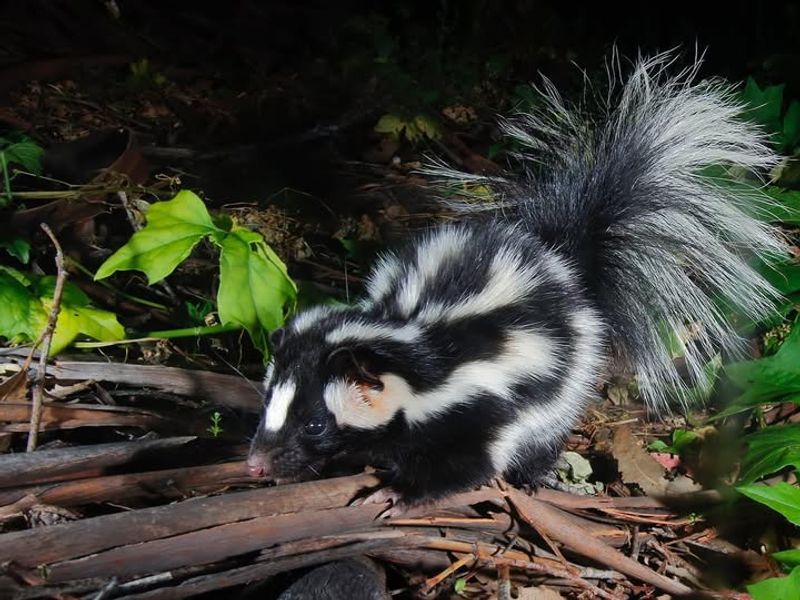
Sometimes, keeping skunks out of your yard requires a community effort. Educating your neighbors about skunk prevention can lead to broader neighborhood initiatives that benefit everyone. A united front means more yards are less appealing to skunks, reducing the chances they’ll target your property in particular.
Share tips and strategies that have worked for you, and encourage others to adopt similar measures. This can be done through community meetings, social media groups, or friendly conversations.
By fostering a community-wide approach, you not only protect your own yard but also contribute to a larger skunk-free area, making your neighborhood a more pleasant place for both people and wildlife.






